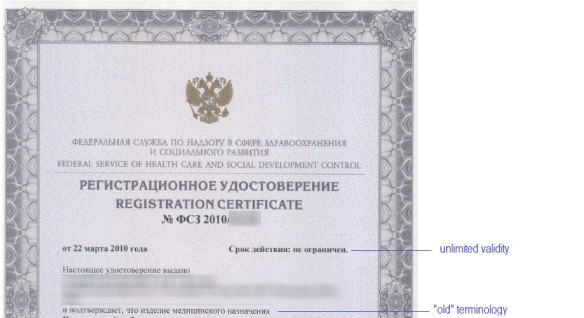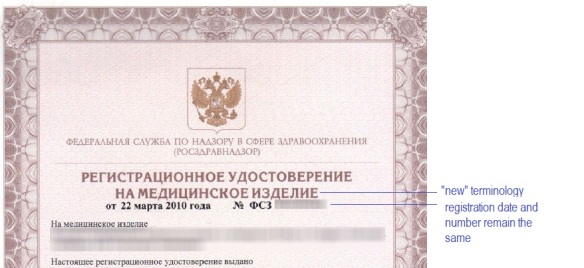Dear Colleagues,
Just before the New Year, let me depart from our usual and traditional “three things of the month” format and instead summarise five of the most significant regulatory changes for medical devices in Russia for 2015.
- Eurasian Medical Device Regulations – since 2016 in “limited mode”
As we know, the strategic agreement on the common principles and the rules of circulation of medical devices across the Eurasian Economic Union was signed more than one year ago. Within 2015, two more countries accepted this agreement. This, starting from 1 January 2016, Russia, Kazakhstan, Belarus, Armenia and Kirgizstan will enforce new common and unified requirements on registration and post-market control for medical devices. However, for 30 December 2015, there are at least two main obstacles that will not allow for fully implementing these principles in time.
First, for the moment, all second level regulations (13 documents) that have been prepared and intensely discussed since the beginning of 2015 are still in different stages of supra-national approval and have not been officially published. According to the Eurasian Commission – the supranational Eurasian regulator – all second-level regulations have been internally approved and should be officially enforced on 20 January 2016. Second, according to Russian law, the aforesaid Eurasian agreement must be ratified by the Russian Parliament, a formal step that has not yet been completed. A legislative project can be traced on the official site of Russian Duma and is expected to be ratified in February 2016.
In this way, the full Eurasian regulatory landscape will be evident and is expected to start working within the first quarter of 2016. One thing remains certain: current national submission procedures will remain in place. How long? Let`s see in the end of January.
2.Some Progress in Russian Medical Device Registration
As a consequence of enforcing changes in the registration rules (Resolution #1416) in the middle of 2014, and having had some years of experience with the new regulatory system, the common trend for 2015 was that medical device registration processes remained challenging, but have nonetheless become quicker and more predictable compared to previous years. Thus, according to statistics announced in December by the Roszdravnadzor (Russian medical device regulator), the average time of registration for a medical device, including clinical evaluation or clinical trials, was 8-9 months for both Russian and foreign manufacturers in 2015. The total number of registration waivers in 2015 was halved compared to previous years (Roszdravnadzor claims roughly 7.9% registration rejections). At the same time, the number of rejections for foreign manufacturers was nearly twice as high in 2015 compared to Russian rejections. Furthermore, it is worth mentioning that since July 2015, registration pathways for first class medical devices have been simplified.
The expertise phase remains the most challenging and confusing step of the approval process, which is conducted by one of two separate independent organisations that may apply different assessment approaches and requirements.
If you would like to refresh your knowledge of Russian medical device approval process here are some useful materials posted previously:
–15 steps to register your medical device in Russia
–Recorded webinar on Russian approval process
3.Russia Tightens Control of Medical Devices
On January 2015, Russia enforced Federal Law #532, implementing criminal and civil penalties and even prison terms for the importation, commercialisation and circulation of counterfeit, poor-quality, and unregistered medical devices (in accordance with theMEDICRIME European conventionsigned in 2011); to date, news can be found concerning the first lawsuits applying this law in Russian regions in 2015.
Despite numerous discussions, there is still no obvious legal definition of what an “unregistered medical device” is. Throughout 2015, Roszdravnadzor was extremely consistent in its message that any discrepancy in a medical device’s true characteristics or in its labelling information as shown in its registration file can render a medical device “unregistered” and incur serious legal consequences. In its annual statistics for 2015, Roszdravnadzor states more than 3 700 000 units of non-conformity medical devices and 212 unregistered medical devices were revealed and 13.6 million roubles (USD195 000) of administrative fines were imposed.
4. Overhaul of the Medical Device Approval Process in Ukraine
In July 2015, Ukraine enforced new medical device approval procedures with the possibility of a one year transitional period, when products already registered for 1 July 2015 will be permitted for importation until 1 July 2016 (with the following suggested prolongation up to July 2017).
Instead of previous mandatory registration, a new process more closely resembling the European medical device approval process will be in place. This process differs depending on safety class and conformity assessment route, and consists of appointing an authorised representative, as well as the preparation of technical documentation and a quality management system audit by the specific Ukrainian notified body (see the full process here).
5.Medical Device Additional Tax Problem solved in Russia
In October 2015, the Russian Government published Resolution #1042 (link in Russian) and solved the long-term problem of the applicability of VAT (valued added tax) calculation during customs clearance of medical devices. The problem arose in 2013, with the enforcement of new terminology in the federal law #323, and led in some cases to 18% additional taxation – painful from a business perspective – and needing to claim it back via bureaucratic trial litigations. For now, the simplified implementation of VAT rules are as follows:
-medical devices listed in Resolution #1042 (October 2015) are imported at 0% VAT
-medical devices listed in Resolution # 870 (October 2014) are imported at 10% VAT
-medical device accessories are imported at 18% VAT.
That`s it for this year!
Thank you again for following and see you in 2016, it will be interesting!
Bonne année à tous!
Alexey
Alexey@medicaldevicesinrussia.com
@MedDevRus.



